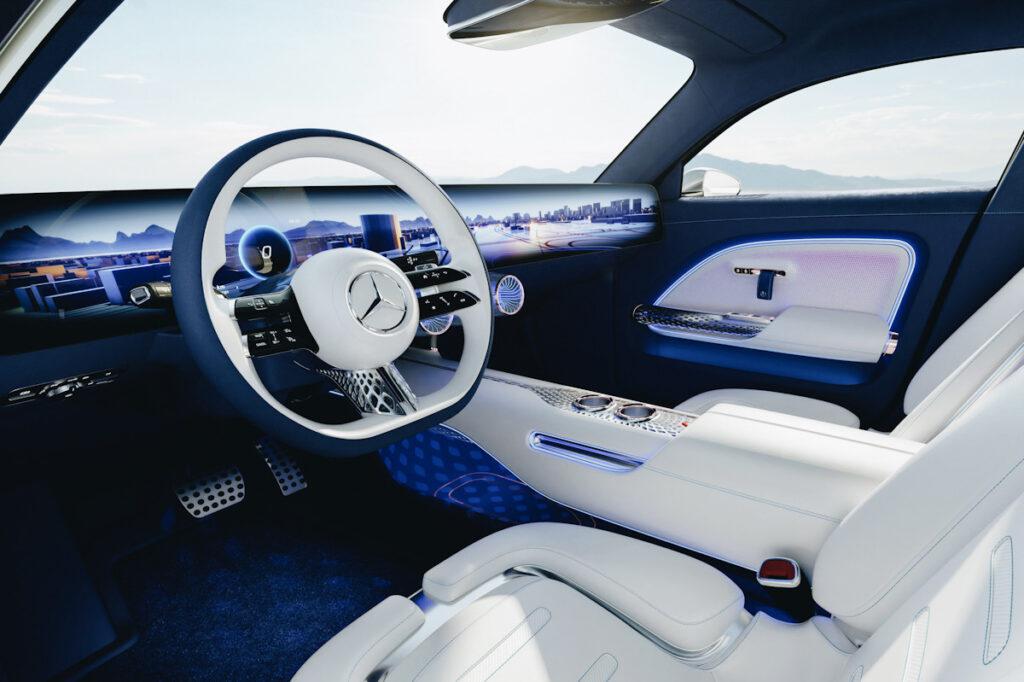Mercedes-Benz is looking to solar energy to power its latest electric vehicle. And, while it’s at it, it’s also making a run for the title of the longest-range EV.
The luxury automaker (digitally) revealed the Vision EQXX at the Consumer Electronics Show in Las Vegas this week, joining numerous other companies in putting on socially-distanced showcases at the tech event this year due to COVID-19.
According to Mercedes, the solar-powered concept car has more than 620 miles of range on a single charge. (That’s about the distance from New York City to South Carolina.) To put the car’s range into perspective, the latest electric vehicles on the market have a range of about 250-300 miles per charge. The Tesla Model S Long Range Plus leads the pack at a range of 412 miles with its 2020 model.
In terms of energy, Mercedes says the car will consume less than 10kWh per 100 kilometers, or more than 6 miles per kWh. While the range and energy consumption estimates are not set in stone in this phase, the Vision EQXX is “completely realistic,” according to the company.

But Mercedes’ claims should be taken with a grain of salt. If the car makes it beyond the concept phase, its range will need to be independently certified by the Environmental Protection Agency as well as the Worldwide Harmonized Light Vehicle Test Procedure in Europe.
The challenges of solar-powered cars
Additionally, the Vision EQXX can get just over 15 miles of extra range, thanks to an assist from the 117 solar cells on its roof. Making a solar-powered vehicle is no easy feat—there’s a good reason why solar panels have been relegated to providing supplementary power in cars like the Hyundai Ioniq 5, which offers it as an option rather than the standard.
Only about 55 percent of the sun’s energy reaches the Earth’s surface. Plus, in terms of efficiency, the majority of sunlight that hits solar panels is not converted into electricity. Despite this, a handful of automakers are also attempting to make the solar-powered car happen: California-based Aptera Motors hopes to build 5,000 three-wheeled vehicles this year, and the Netherlands’ Lightyear is currently working on the Lightyear One.
Aside from its notable range, the interior of the Vision EQXX features a number of sustainable materials throughout, which Mercedes claims will “cut the carbon footprint significantly.” A cowhide-free leather made from mycelium, the fibrous underground root structure of fungi, makes up the seat cushions. Other parts of the interior are made from cactus leather, and the door pulls are made from zero-waste vegan silk biopolymers. The carpets are made from the fibers of the bamboo plant, a fast-growing and highly renewable resource.
Other notable features of the luxury electric vehicle include an enormous touchscreen user interface with real-time graphics that span the entire width of the car, with “technology that mimics the workings of the human brain,” according to Mercedes. The voice-controlled system is represented by an ethereal human-shaped avatar made up of stars, modeled after Mercedes Jellinek, the daughter of an early customer to Daimler, Mercedes’ parent company.
Mercedes plans to test drive the Vision EQXX this spring, and intends to put the car’s battery, electric motor technology, and some other features into production in 2024. The company intends for electric vehicles to make up half of its sales by 2025, and aims to be “ready to go all electric” by 2030.




